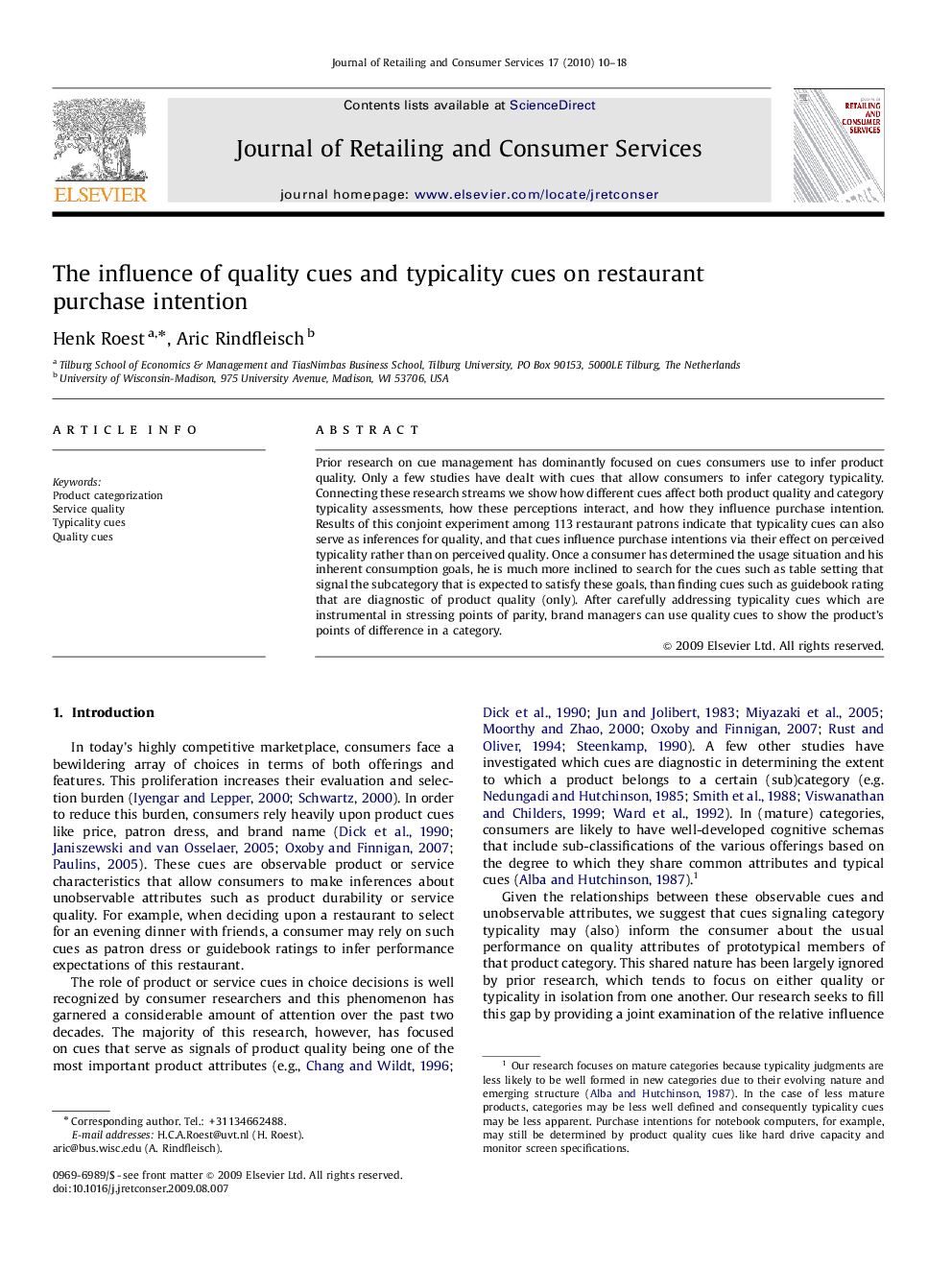| Article ID | Journal | Published Year | Pages | File Type |
|---|---|---|---|---|
| 1029576 | Journal of Retailing and Consumer Services | 2010 | 9 Pages |
Prior research on cue management has dominantly focused on cues consumers use to infer product quality. Only a few studies have dealt with cues that allow consumers to infer category typicality. Connecting these research streams we show how different cues affect both product quality and category typicality assessments, how these perceptions interact, and how they influence purchase intention. Results of this conjoint experiment among 113 restaurant patrons indicate that typicality cues can also serve as inferences for quality, and that cues influence purchase intentions via their effect on perceived typicality rather than on perceived quality. Once a consumer has determined the usage situation and his inherent consumption goals, he is much more inclined to search for the cues such as table setting that signal the subcategory that is expected to satisfy these goals, than finding cues such as guidebook rating that are diagnostic of product quality (only). After carefully addressing typicality cues which are instrumental in stressing points of parity, brand managers can use quality cues to show the product's points of difference in a category.
